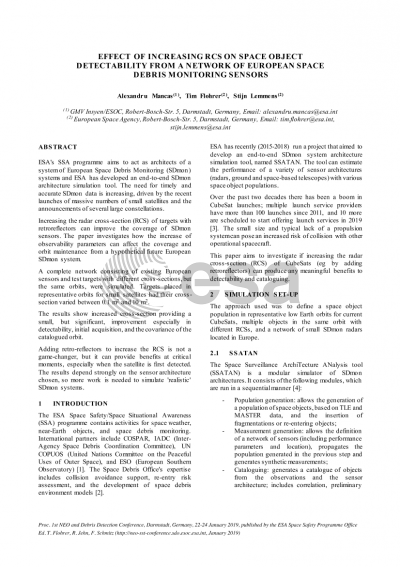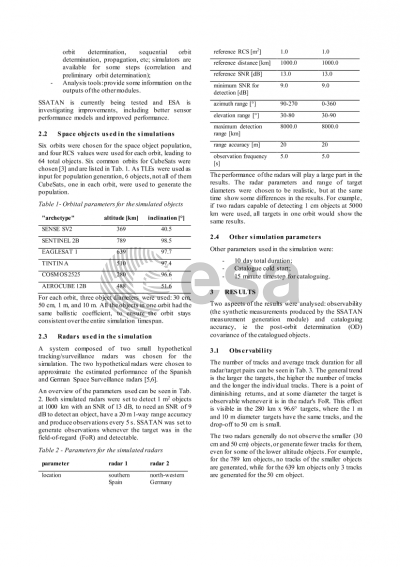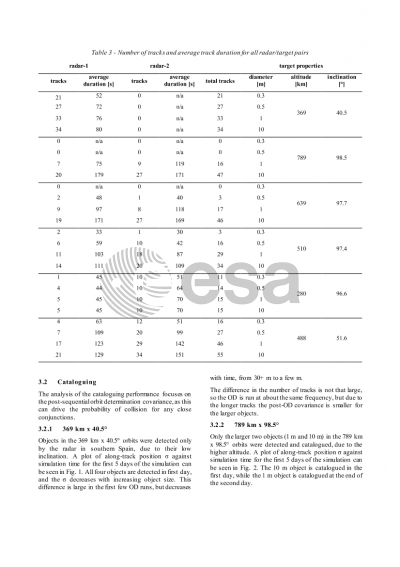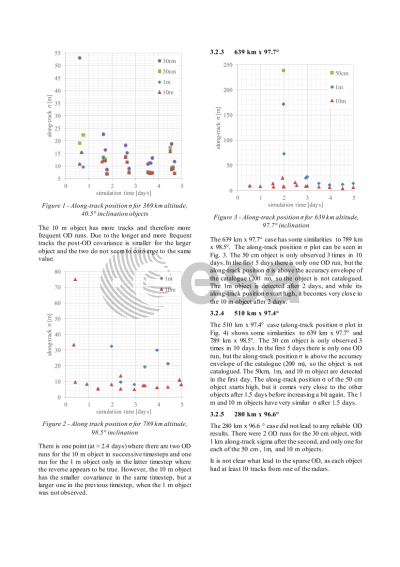Document details
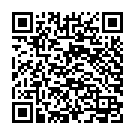
Abstract
ESA's SSA programme aims to act as architects of a system of European SST systems and ESA has developed an end-to-end SST architecture simulation tool. The need for timely and accurate SST data is increasing, driven by the recent launches of massive numbers of small satellites and the announcements of several large constellations.
Increasing the radar or optical cross-section of targets with retroreflectors can improve the coverage of SST sensors. The paper investigates how the increase of observability parameters can affect the coverage and orbit maintenance from a hypothetical future European SST system.
A complete network consisting of existing European sensors and test targets with different cross-sections, but the same orbits, were simulated. Targets placed in representative orbits (Sun-synchronous LEO, GEO, etc) had their cross-section varied between 0.01 m2 and 100 m2.
The results show increased cross-section providing a small, but significant, improvement especially in detectability, initial acquisition, and the covariance of the catalogued orbit.
Adding retro-reflectors to increase the optical and radar cross-section of targets is not a game-changer, but it can provide benefits at critical moments, especially when the satellite is first detected. The results depend strongly on the sensor architecture chosen, so more work is needed to simulate "realistic" SST systems.
Preview
